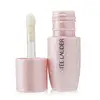What's inside
What's inside
 Key Ingredients
Key Ingredients

 Benefits
Benefits

 Concerns
Concerns

 Ingredients Side-by-side
Ingredients Side-by-side

Water
Skin ConditioningButylene Glycol
HumectantDicaprylyl Carbonate
EmollientSilica
AbrasiveGlycerin
HumectantNiacinamide
SmoothingIsopropyl Isostearate
EmollientCitrus Limon Peel Oil
MaskingCitrus Grandis Peel Oil
MaskingMentha Viridis Leaf Oil
AstringentCitrus Aurantium Dulcis Peel Oil
MaskingLimonene
PerfumingLinalool
PerfumingCitral
PerfumingButyrospermum Parkii Butter
Skin ConditioningSimmondsia Chinensis Butter
Skin ConditioningHydroxyethyl Urea
HumectantHordeum Vulgare Extract
EmollientTrehalose
HumectantCucumis Sativus Fruit Extract
EmollientPanax Ginseng Root Extract
EmollientSodium Polyaspartate
HumectantTocopheryl Acetate
AntioxidantSodium PCA
HumectantHelianthus Annuus Seedcake
AbrasiveSorbitol
HumectantCaffeine
Skin ConditioningLinoleic Acid
CleansingOphiopogon Japonicus Root Extract
Skin ConditioningSqualane
EmollientSodium Hyaluronate
HumectantPPG-15 Stearyl Ether
EmollientAmmonium Acryloyldimethyltaurate/Vp Copolymer
Hydroxyacetophenone
AntioxidantCarbomer
Emulsion StabilisingCaprylyl Glycol
EmollientXanthan Gum
EmulsifyingSodium Hydroxide
BufferingEthylhexylglycerin
Skin ConditioningDisodium EDTA
Phenoxyethanol
PreservativeWater, Butylene Glycol, Dicaprylyl Carbonate, Silica, Glycerin, Niacinamide, Isopropyl Isostearate, Citrus Limon Peel Oil, Citrus Grandis Peel Oil, Mentha Viridis Leaf Oil, Citrus Aurantium Dulcis Peel Oil, Limonene, Linalool, Citral, Butyrospermum Parkii Butter, Simmondsia Chinensis Butter, Hydroxyethyl Urea, Hordeum Vulgare Extract, Trehalose, Cucumis Sativus Fruit Extract, Panax Ginseng Root Extract, Sodium Polyaspartate, Tocopheryl Acetate, Sodium PCA, Helianthus Annuus Seedcake, Sorbitol, Caffeine, Linoleic Acid, Ophiopogon Japonicus Root Extract, Squalane, Sodium Hyaluronate, PPG-15 Stearyl Ether, Ammonium Acryloyldimethyltaurate/Vp Copolymer, Hydroxyacetophenone, Carbomer, Caprylyl Glycol, Xanthan Gum, Sodium Hydroxide, Ethylhexylglycerin, Disodium EDTA, Phenoxyethanol
Hydrogenated Polyisobutene
EmollientOctyldodecanol
EmollientPolybutene
Simmondsia Chinensis Seed Oil
EmollientHelianthus Annuus Seed Oil
EmollientSodium Hyaluronate
HumectantLavandula Angustifolia Oil
MaskingCamellia Japonica Seed Oil
EmollientCaprylic/Capric Triglyceride
MaskingSalicornia Herbacea Extract
Skin ConditioningRosa Damascena Flower Oil
MaskingButylene Glycol
HumectantCaprylyl Glycol
EmollientPentaerythrityl Tetraisostearate
EmollientTrehalose
HumectantCollagen
MoisturisingSodium Chondroitin Sulfate
Skin ConditioningSilica Dimethyl Silylate
EmollientHexylene Glycol
EmulsifyingPhenoxyethanol
PreservativeHydrogenated Polyisobutene, Octyldodecanol, Polybutene, Simmondsia Chinensis Seed Oil, Helianthus Annuus Seed Oil, Sodium Hyaluronate, Lavandula Angustifolia Oil, Camellia Japonica Seed Oil, Caprylic/Capric Triglyceride, Salicornia Herbacea Extract, Rosa Damascena Flower Oil, Butylene Glycol, Caprylyl Glycol, Pentaerythrityl Tetraisostearate, Trehalose, Collagen, Sodium Chondroitin Sulfate, Silica Dimethyl Silylate, Hexylene Glycol, Phenoxyethanol
Alternatives
Ingredients Explained
These ingredients are found in both products.
Ingredients higher up in an ingredient list are typically present in a larger amount.
Butylene Glycol (or BG) is used within cosmetic products for a few different reasons:
Overall, Butylene Glycol is a safe and well-rounded ingredient that works well with other ingredients.
Though this ingredient works well with most skin types, some people with sensitive skin may experience a reaction such as allergic rashes, closed comedones, or itchiness.
Learn more about Butylene GlycolCaprylyl Glycol is a humectant and emollient, meaning it attracts and preserves moisture.
It is a common ingredient in many products, especially those designed to hydrate skin. The primary benefits are retaining moisture, skin softening, and promoting a healthy skin barrier.
Though Caprylyl Glycol is an alcohol derived from fatty acids, it is not the kind that can dry out skin.
This ingredient is also used as a preservative to extend the life of products. It has slight antimicrobial properties.
Learn more about Caprylyl GlycolPhenoxyethanol is a preservative that has germicide, antimicrobial, and aromatic properties. Studies show that phenoxyethanol can prevent microbial growth. By itself, it has a scent that is similar to that of a rose.
It's often used in formulations along with Caprylyl Glycol to preserve the shelf life of products.
Sodium Hyaluronate is hyaluronic acid's salt form. It is commonly derived from the sodium salt of hyaluronic acid.
Like hyaluronic acid, it is great at holding water and acts as a humectant. This makes it a great skin hydrating ingredient.
Sodium Hyaluronate is naturally occurring in our bodies and is mostly found in eye fluid and joints.
These are some other common types of Hyaluronic Acid:
Learn more about Sodium HyaluronateTrehalose is a disaccharide made of two glucose molecules (glucose is sugar!). Trehalose is used to help moisturize skin. It also has antioxidant properties.
As a humectant, trehalose helps draw moisture from the air to your skin. This helps keep your skin hydrated.
Due to its antioxidant properties, trehalose may help with signs of aging. Antioxidants help fight free-radical molecules, unstable molecules that may damage your skin.
In medicine, trehalose and hyaluronic acid are used to help treat dry eyes.
Some animals, plants, and bacteria create trehalose as a source of energy to survive freeze or lack of water.
Learn more about Trehalose